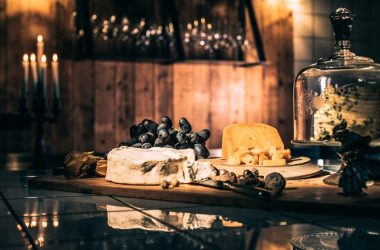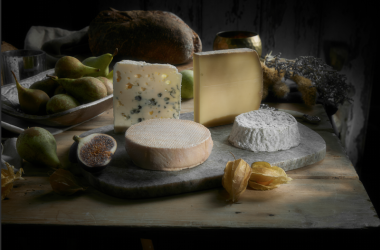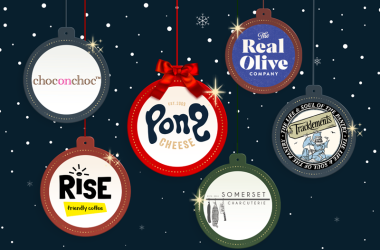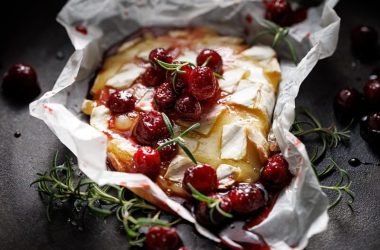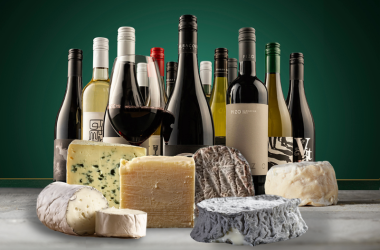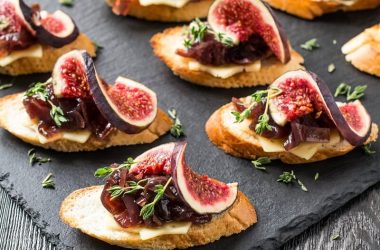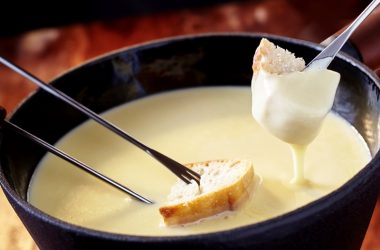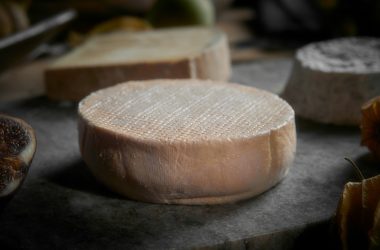A Tour of Scandinavian Cheese
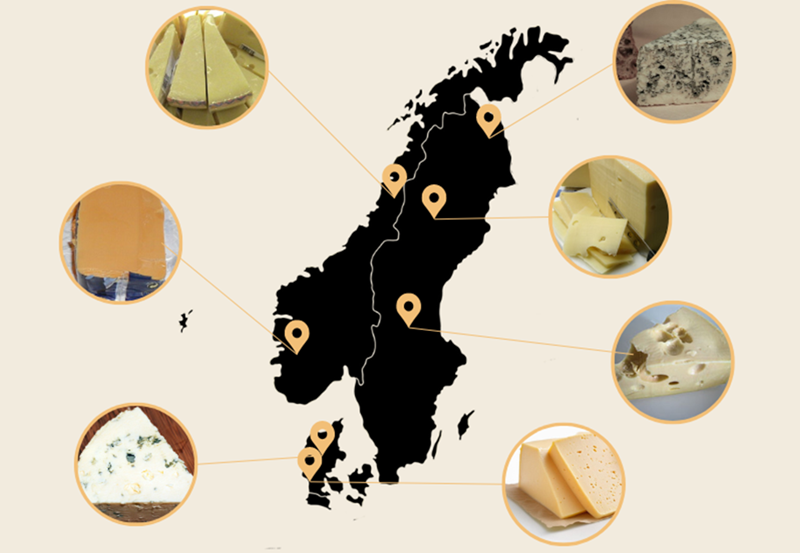
When you think of Scandinavia, cheese may not spring to front of mind, but thanks to the Viking’s love of cheese it has a long history similar to the rest of Europe. Today, the rich habitat of pastures surrounded by ancient forests and fungi offer cattle a unique diet that is responsible for exceptional dairy products, including their famous yoghurts. Here are seven cheeses from Sweden, Norway and Denmark that are all worth a thorough tasting session… Join us on a tour of Scandinavian cheese.
Adelost
We begin our tour in Sweden, and with Adelost – a Swedish blue cheese that is made with cow’s milk. This is the Swedish version of French blue cheese and is made in a similar fashion to Bleu d’Augverne. It has blue-grey veins and a sharp, salty and tangy flavour, and comes in a drum or cylinder shape, with a light cream rind dusted with moulds.
Adelost literally means “noble cheese” or “fine cheese”, presumably because this was created as an alternative to what would have been a very expensive French export. The Swedes like to use this cheese in salads – mixed with extra virgin olive oil and balsamiq vinegar. It is also often enjoyed with Swedish gingerbread crackers popular at Christmastime called pepparkaka, which are very thin, crisp, and subtly spicy. It is often served with a local schnapps or a hoppy beer.
Grevé
Grevé or sometimes called Greveost, is a semi-hard Swedish cheese made from cow’s milk that was first produced in Örnsköldsvik, in Västernorrland County, Sweden in 1964. It looks similar to Emmental and this is by design. The makers were looking to replicate Alpine cheeses and wanted something similar to Gruyere, though this is more springy and has large holes throughout. The 40% fat content and long maturing process (10-months) gives it a creamy, nutty flavour but it’s also mild and sweet.
This cheese plays a daily role in Swedish cooking because its mild flavour appeals to young and old alike. To eat, spread on brioche with butter and fill with thin slices of the cheese and smoked ham. It’s often grated into béchamel-type sauces.
Vadenost/ Herrgardsost
Created in the 18th century as a local alternative to Gruyère, Herrgårdsost gets its name from the Swedish for “manor house” because they were originally produced at Swedish manor houses, near the port of Vadenost.
It is softer and more supple than Gruyère, with smaller round holes. It’s produced in large wheels that are sealed in wax and aged for a minimum of 4 months and up to 24 months. This gives it a uniquely soft texture and an intense mature flavour. It’s considered to be similar to a cheddar in looks and flavour, but the softness makes it stand apart.
It’s an all-rounder so great for cheeseboards, cooking and snacking, but is often eaten locally with pickled gherkins which accentuate its tangy character.
Brunost/ Geitost
We continue our Scandinavian cheese tour in Norway, where we meet a sweet, dense, caramelised brown cheese called Brunost. In fact it’s produced all over Scandinavia and is known as Myost in Norway, Mesost (Swedish), Meesjuusto (Finnish), Mysuostur (Icelandic), Myseost (Danish) and Braunkäse (German). The Norwegian and German names mean ‘brown cheese’ and the other names mean ‘whey cheese’ as it’s made with whey, milk or cream.
This cheese came into being as a result of the Scandinavian producers wanting to use every element of their milk, and not waste the whey. The whey is cooked so that the proteins and fats separate and the remaining liquid evaporates, leaving behind a sticky brown caramelized mass of sugars. Sometimes cream or milk is added to increase the yield.
The most commonly exported varieties are Brunost and Geitost (also known as Gjetost), which are made with a mixture of goat’s and cow’s milk and whey, Ekte Geitost made with goat’s milk and whey. Brunost is often eaten for breakfast and is usually served thinly on rye toast or crisp bread. It is considered healthy because it contains iron, calcium and B vitamins.
Jarlsberg
Jarlsberg is a mild, semi-soft cow’s milk cheese of Norwegian origin. Farmer Anders Larsen Blake first produced the cheese in the 1830s, in Jarlsberg and Vestfold county. Around 1855 production was stopped and it largely disappeared from the market. Farmer and professor Ole Martin Ystgaard reintroduced it in 1956 after reading a student’s thesis on Norway’s dairy industry. He experimented with his team adding adding bacterial culture to cheese vats, until they produced the right recipe. It was named for a Norwegian nobleman Count Wedel Jarlsberg, who owned land near the original Vestfold county. It is now enjoyed worldwide and produced in Norway, Ireland and the USA.
The original recipe was inspired by Swiss Emmental and is marketed that way, but Jarlsberg is softer, more supple, sweeter, and less nutty, with a fermenting fruit tang to the finish. The characteristic holes or “eyes” are the result of the action of the bacteria Propionibacterium freudenreichii which naturally occurs in milk and is added back into the cheese during production according to a closely guarded secret formula. It is normally produced as a 10kg wheel covered in a yellow wax rind, which reveals a soft, buttery texture.
Danablu (Danish Blue)
Denmark is our final country stop on this Scandinavian Cheese tour, where we enjoy two very different cheeses – Danablu and Harvarti.
Danablu, also known as Danish Blue, is a semi-soft, blue-veined cheese made from cow’s milk. It was developed early in the 20th century by Danish cheese maker Marius Boel with the intention of emulating a Roquefort-style cheese. Now it’s a PGI-marked cheese so can only be made in Denmark, to the original recipe. Made from full fat cow’s milk and homogenized cream, then pierced with copper rods to form curds which distribute the mould evenly through the cheeses. The wheel is then aged for 8-12 weeks. When cut you can still see the holes from the rods.
Danablu has a creamy texture with distinctive deep purple-blue veins running throughout, with a smooth yet crumbly and moist texture. The flavour is full, sharp, tangy and salty with an almost metallic bite and creamy finish. It’s a popular choice among blue cheese lovers. The cheese can be enjoyed on its own, crumbled over salads, melted into sauces, or enjoyed with biscuits or bread. It pairs well with fruits such as pears and grapes.
Havarti
Harvarti is probably Denmark’s most famous cheese. It was invented in the mid-1800s by Hanne Neilsen, who was the wife of a farmer from New Zealand. She travelled through Europe to learn cheesemaking and came up with the idea of this cheese. It was originally named “Havarthi,” after her farm.
The production process involves curdling the milk, draining the whey, and pressing the curds into moulds before aging them for several months. As the cheese matures, it develops small, irregular holes throughout its pale yellow paste. The maturing process also contributes to Havarti’s complex flavour that has a hint of nuttiness and a tangy finish.
As a cow’s milk cheese it’s supremely creamy and gets creamier with age. It has a smooth texture and buttery aroma that becomes sharper and saltier with hints of hazelnut.
And so, with our bellies full of wonderfully complex and delicious cheese, our Scandinavian Cheese tour concludes. We’ll be back in Autumn as we head into the Alps with a taste of Austria, Switzerland and more.

